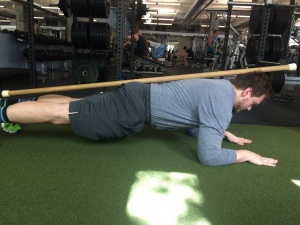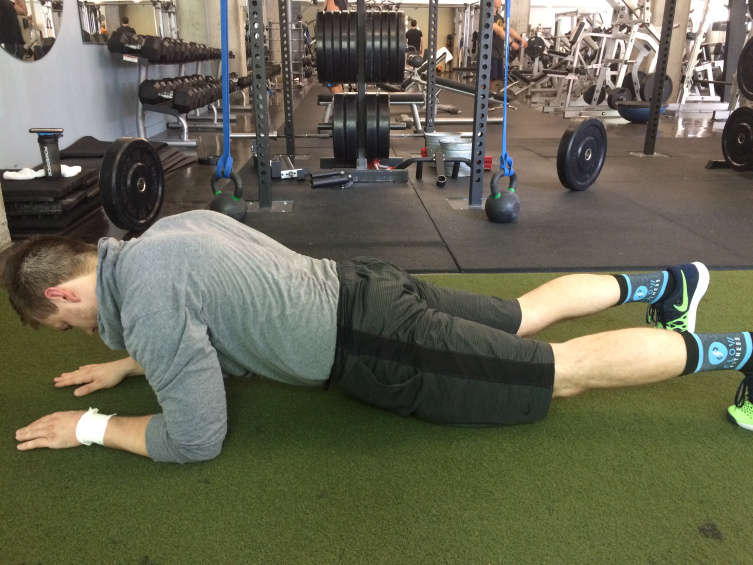This post was written by Flow Personal Trainer, Mack Klink
Take away points:
* The Plank is a simple exercise that’s often performed wrong by over extending the duration with terrible form.
* Do not allow your body to creep into lordosis or excessive kyphosis.
* Focus on maintaining the three points of contact over plank duration – quality over quantity.
The Plank, the exercise that everyone does and thinks they knows how to do. It’s easy, right? Place your elbows on the ground, straighten out, hold on for dear life and in no time you’ll have the six-pack you always wanted. What more is there to know about planking?
Quite a bit actually.
The plank started out with noble intentions, however, the problem is most people aren’t correctly activating the right muscles. The emphasis is placed on time, rather than strengthening the deep core. This is a problem because overextending the set too long can potentially cause postural dysfunction. The core isn’t designed to fire for extended periods of time in isolation.
Postural dysfunction
While planking, individuals are usually not paying attention to both form and technique. Instead, they’re scrolling through their Facebook or putting together their workout playlist. In short, their focus and attention is elsewhere. The plank was never meant to be a half-ass engaged hold with large curves in the back, and belly sagging towards the ground. While in this position, your body creates a large lumbar lordosis* while the upper back is compensating with an exaggerated thoracic kyphosis*. After reading that last line, I bet you are like “lord who it’s with an exaggerated what its?”
So, what’s wrong with being in this position? According to Mike Robertson, owner of Indianapolis Fitness and Sports Training (IFAST),
“You are literally hammering your lumbar spinous process together to create stability.” In short, this is NOT carving out that six pack (the main purpose) and instead hurting your overall posture with the lumbar lordosis and excessive kyphosis and causing lower back pain!”
The correct way to plank
 Luckily, there is a quick and easy way to prevent your body from creeping into these postural aliments and all you need is a stick.
Luckily, there is a quick and easy way to prevent your body from creeping into these postural aliments and all you need is a stick.
Go ahead and assume the elbow plank position with the stick on your back. The goal is to have three points of contact with the stick: head, upper back, and glutes with minimal space between the stick and lower back.
By being in this position, the exercise is completely changed. First, your body is in the correct position with optimal posture and minimizes lower back issues. Second, you will get your transverse abdominals, external and internal oblique muscles engaged for maximum muscle contraction.
More muscles working = better results.
It may be difficult to hold the plank position while maintaining the three points of contact at first, but don’t worry. Keep working on it. Focus on holding this position for as long as you can, even if it’s only for 15-30 seconds. Focus on quality, not quantity and progress slowly.
The Plank’s Step by Step Coaching Points:
* Use a stick to keep yourself honest.
* Place elbows underneath your shoulders and flatten forearms against the ground.
* Lift your torso off the ground
* Place the stick on your back. Remember to maintain the three points of contact on the stick.
* The lower back should have a small dig, just large enough for a coach or friend to slide their fingertips between your back and stick.
* Focus on squeezing your glutes, brace your core, and pressing your hands into the ground.
Give it a try. Focus on maintaining the three points of contact throughout the entire plank duration and you may discover a new appreciation for this exercise.
Some quick definitions.
* Lordosis – Greek word meaning “bent backwards,” refers to the inward curve of the lower back and cervical spine (neck). Too much of a low back curve is called lumbar hyperlordosis or hollow back.
* Kyphosis – Greek word meaning “hump.” There should naturally be kyphosis in your thoracic spine (upper back). However, too much hump in your back can lead to you becoming the next Humpback of Notre Dame.

